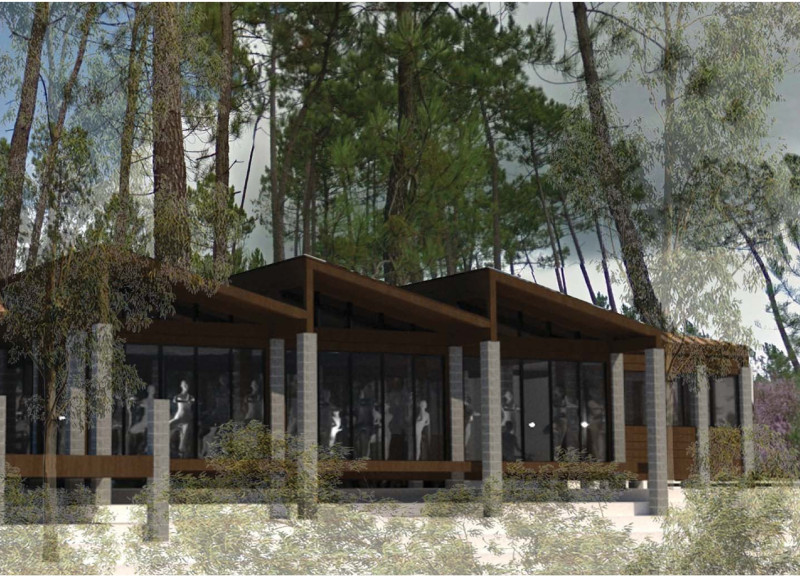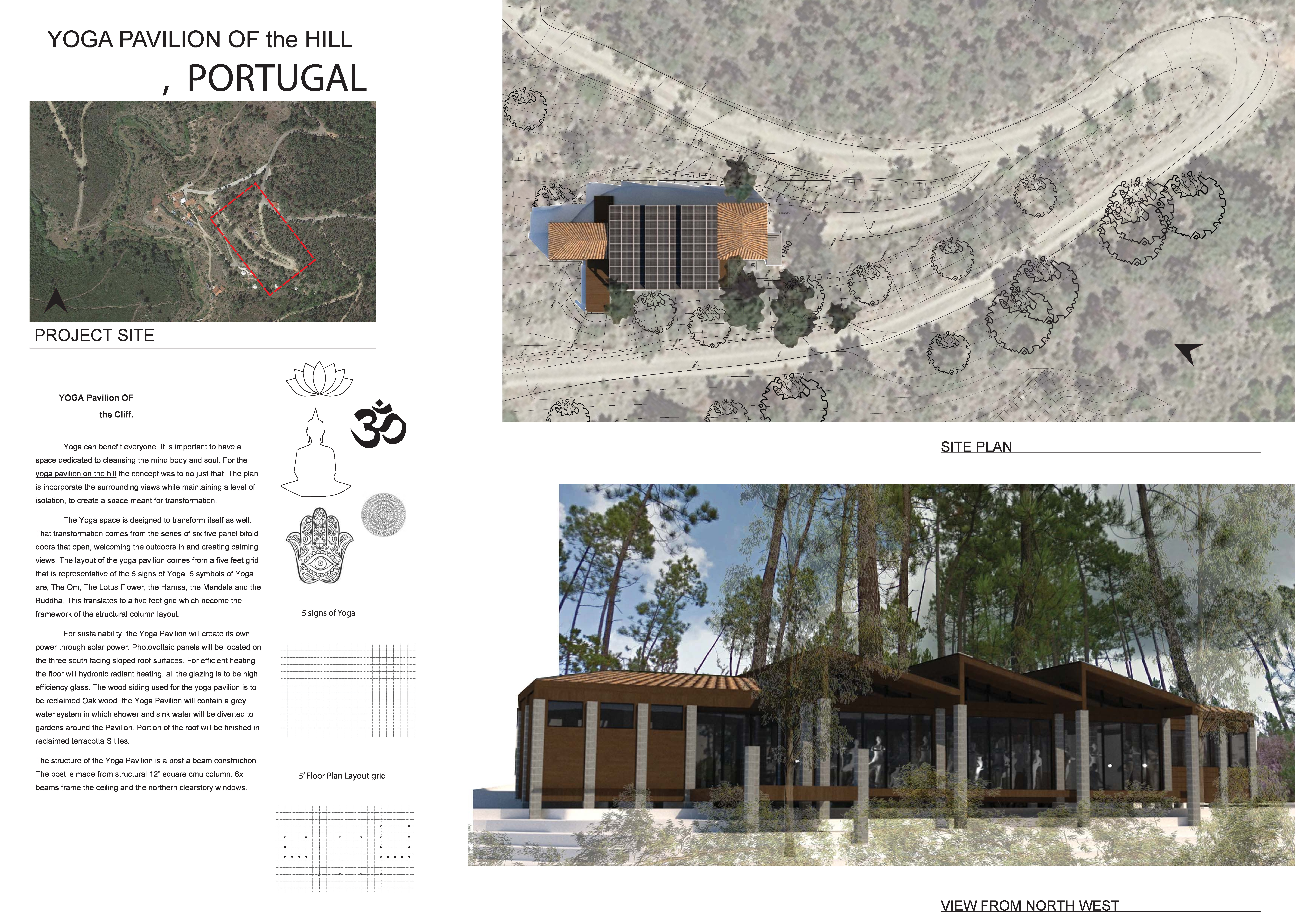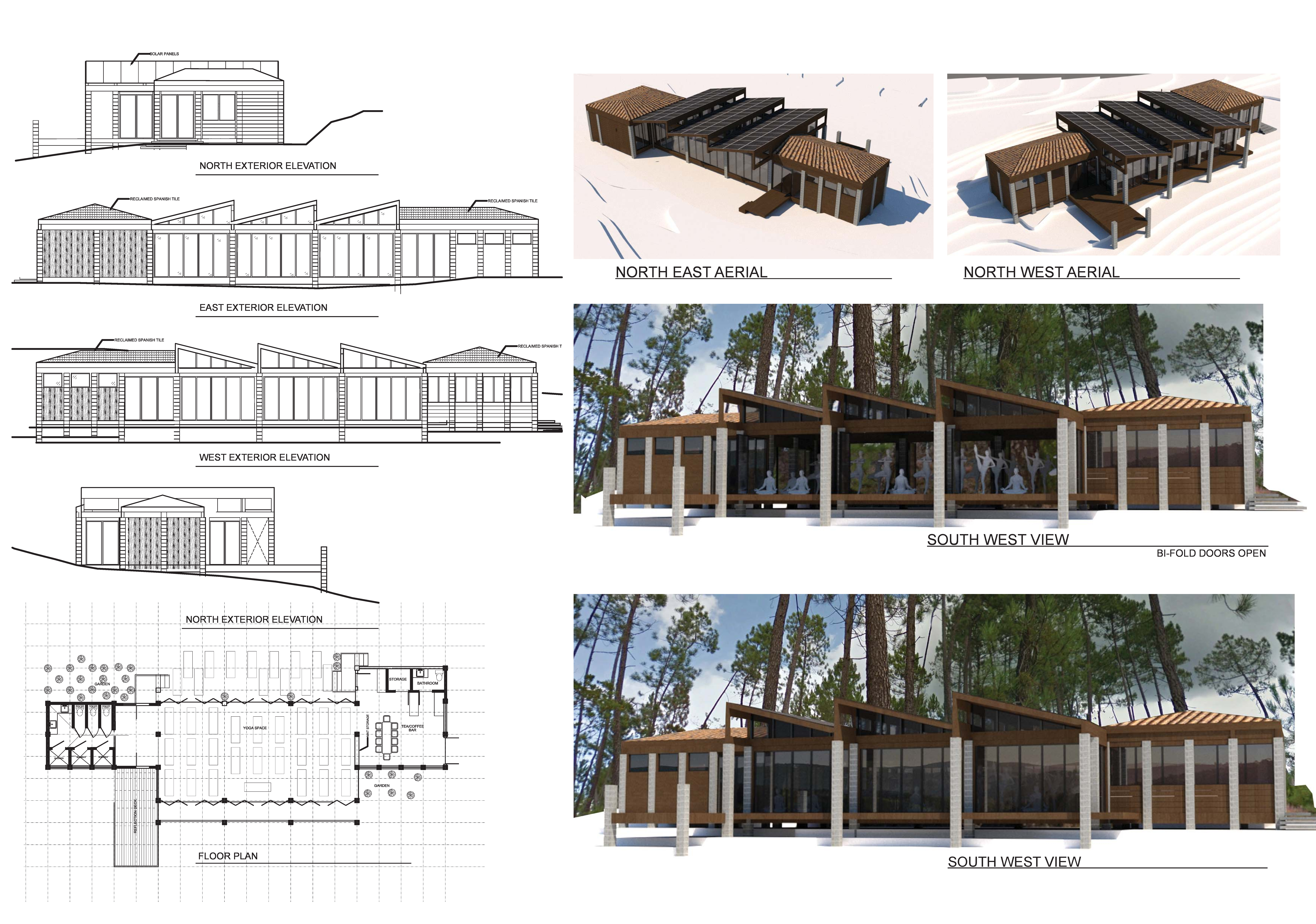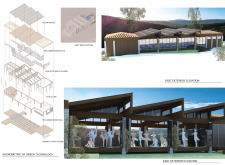5 key facts about this project
The Yoga Pavilion of the Hill, located in Portugal, provides a calm space for yoga and mindfulness practices. It is positioned in a natural setting that enhances its function as a place for reflection and introspection. The overall design concept centers on transformation, creating a strong relationship between the users and their environment. The layout and structure are informed by the principles of yoga, ensuring that the space supports both physical and mental well-being.
Spatial Configuration
The layout is open and inviting, featuring bifold doors that connect the inside with the outside. These doors allow natural light to fill the space while providing views of the surrounding landscape. The design follows a five-foot grid that reflects five essential signs of yoga: The Om, The Lotus Flower, the Hamsa, the Mandala, and the Buddha. This organization makes sure that every area in the pavilion serves a clear purpose, enhancing the experience of practicing yoga.
Sustainability Features
Sustainability plays a key role in the overall design. The pavilion is equipped with photovoltaic panels on three south-facing sloped roofs, helping it produce its own energy. This system promotes the idea of self-sufficiency in energy use. Additionally, a grey water system channels water from sinks and showers to nourish nearby gardens, demonstrating a commitment to environmental responsibility.
Material Choices
The structure employs post and beam construction, providing both strength and flexibility in the interior space. High-efficiency glass is used for windows, ensuring energy performance while maintaining a comfortable indoor atmosphere. The exterior is finished with reclaimed oak wood siding, aligning with sustainability goals and contributing to the natural appearance. Portions of the roof are covered with reclaimed terracotta tiles, linking the design to traditional local architecture.
Clerestory windows are strategically placed to maximize natural light, creating a peaceful atmosphere suitable for yoga and meditation. Each design choice reflects a careful consideration of how the space can promote wellness, highlighting the connection to the surrounding environment and enhancing the overall experience of its users.






















































